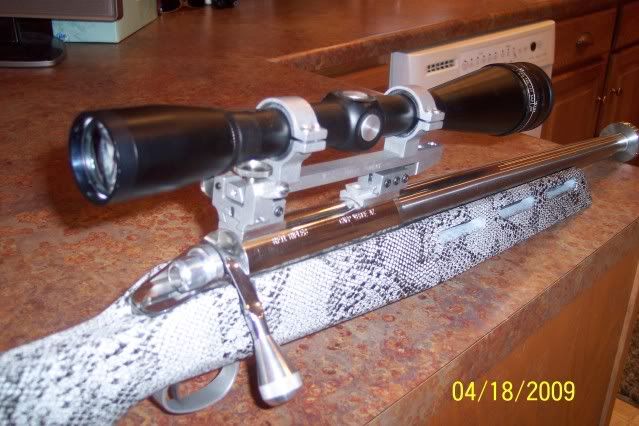When at the range yesterday there was a BR competition of some sort. They were wrapping when I got there.
As I usually do I walked down the line kind of checking out the weapons and meeting guys I havent met before.
On of the guys had a 36X(I think that is what he said) Sightron. The scope had 2 plastic knobs clearly installed after it left the factory. One of the knobs was on the underside of the scope body and the other on the left side, where our scopes typically have parallax adjustments.
I asked WTH they were for and he said they locked his reticule in place. Immediately I asked if he had a "wandering Zero" prior to installing.
His reply was all scopes do unless you spend $2500. I wasnt going to argue but I told him I had $300 VXII's on hunting rifles that never have moved, but they didnt get shot a ton nor did I move the zero much once sighted in.
I am just curious about this. Does it even work? It appeared that he had drilled into the side of the scope body and screwed these things into the erector system. Looks like it would do all kind of weird shit to the reticule, including distort things.
I looked through the scope and was not at all impressed with the image. Very cloudy with a very finicky "eyebox". Wouldnt be happy if I had paid $600 for a fixed power with that kind of resolution and the necessity of screwing "locks" into it to maintain zero.
As I usually do I walked down the line kind of checking out the weapons and meeting guys I havent met before.
On of the guys had a 36X(I think that is what he said) Sightron. The scope had 2 plastic knobs clearly installed after it left the factory. One of the knobs was on the underside of the scope body and the other on the left side, where our scopes typically have parallax adjustments.
I asked WTH they were for and he said they locked his reticule in place. Immediately I asked if he had a "wandering Zero" prior to installing.
His reply was all scopes do unless you spend $2500. I wasnt going to argue but I told him I had $300 VXII's on hunting rifles that never have moved, but they didnt get shot a ton nor did I move the zero much once sighted in.
I am just curious about this. Does it even work? It appeared that he had drilled into the side of the scope body and screwed these things into the erector system. Looks like it would do all kind of weird shit to the reticule, including distort things.
I looked through the scope and was not at all impressed with the image. Very cloudy with a very finicky "eyebox". Wouldnt be happy if I had paid $600 for a fixed power with that kind of resolution and the necessity of screwing "locks" into it to maintain zero.


